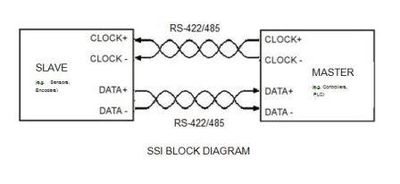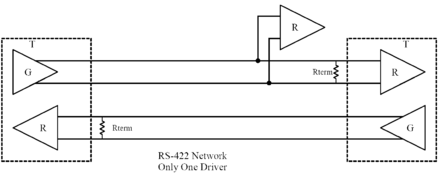I will work on a small project where an SSI-output data (angle data) of a rotary-encoder will be read by a micro-controller board (such as an Arduino board) and the micro-controller will then send this data to the PC via USB port. The distance between the encoder and the Arduino board/PC is not more than six meters.
These types of encoders use differential RS422/RS485 electrical interface, one pair for data and another pair for the clock as follows:
I made a drawing for this particular implementation and the signal chain will look like the following:
The controller board is sending the data to the PC via USB. The PC is earth grounded, meaning its motherboard all the way is connected to the chassis and then to the mains earth. The Arduino board is powered also through the USB.
U1 and U2 are two of these Differential Bus Transceivers(seems there is no galvanic isolation). So these transceivers will be powered by 5V supply or from the Arduno board's 5V terminal. The transceivers and the board will have common ground as depicted in the above diagram.
On the encoder end however the encoder can be powered by a separate power supply(at least that is the plan). In the diagram encoder ground(also the encoder supply ground) is floating wrt controller ground.
My questions are:
Should the encoder ground better be directly wired to the controller ground via a dedicated wire?
If I use the same supply for the transceivers and the encoder, does it matter the location of the power supply? Can the encoder's power supply be remote to the encoder?
Where should be termination resistors?
I came across this article but it is rather confusing.
EDIT:
A more detailed diagram:








